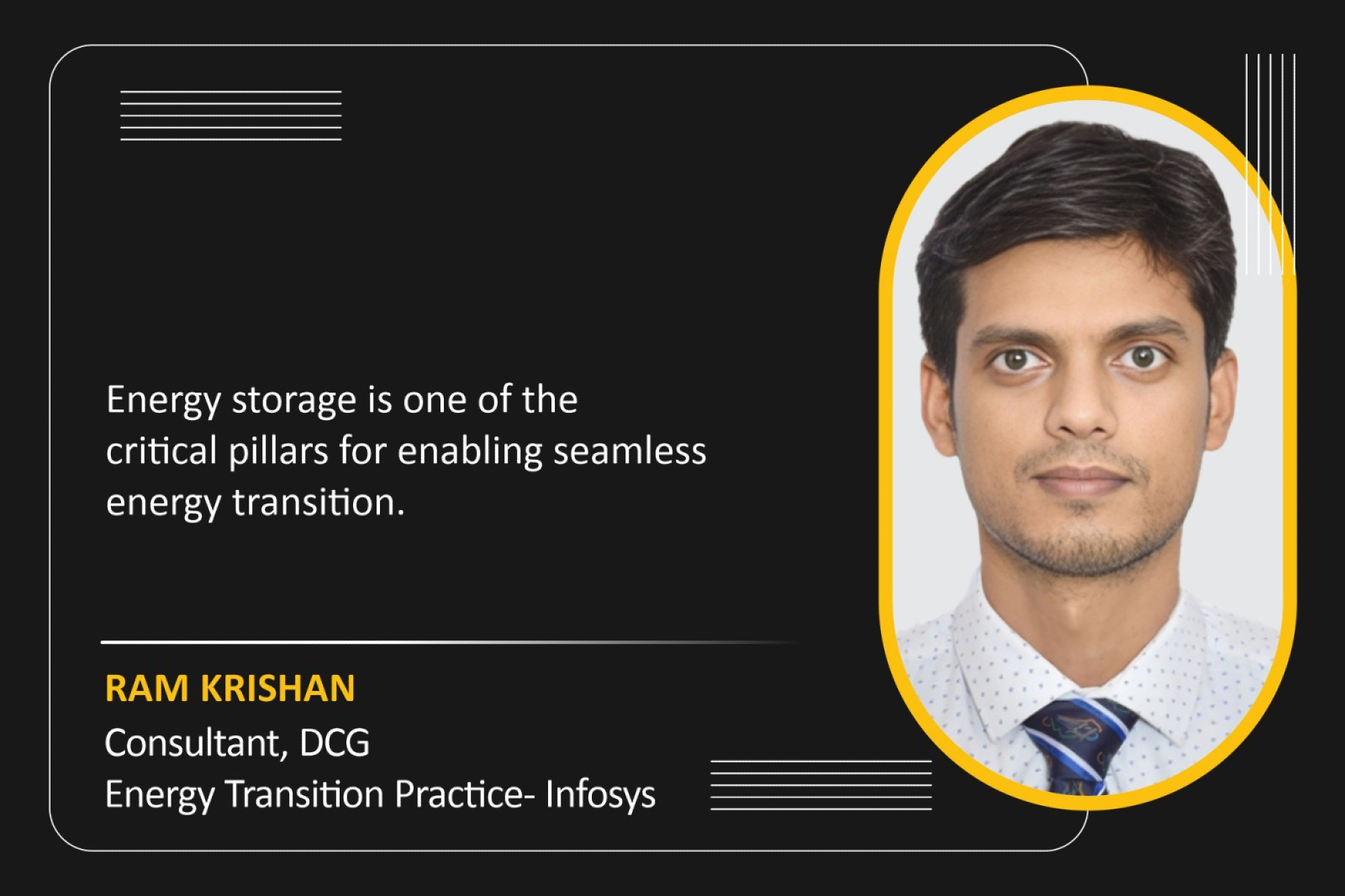Energy storage fosters RE adoption
By EPR Magazine Editorial November 16, 2024 4:31 pm IST
By EPR Magazine Editorial November 16, 2024 4:31 pm IST

Like advanced redox flow batteries, long-duration energy storage (LDES) offers long-duration (10+ hours) energy backup with life cycles of up to 25 years. LDES is a critical enabler for enhancing energy security during extreme weather events, as it can provide a reliable supply for up to 20 hours.
Energy storage technology is critical to enhancing grid reliability, driving sustainability, and reducing coal reliance in India. Ram Krishan discusses the latest advancements in the sector.
What advancements are necessary for commercialising next-generation energy storage technologies?
Energy storage is one of the critical pillars for enabling seamless energy transition. The high penetration of renewables in the grid poses certain network operational challenges. Energy storage (short-term & long-term) provides flexibility to network operation by offering various grid services. Li-ion technology is leading the grid-scale deployment of battery storage due to its modularity, high energy density, economic viability and scalability. However, advancements are still required to improve the thermal stability, energy density and ultra-fast charging capabilities. Therefore, advanced lithium-ion batteries like Li-air, Li-sulfur, and Li-polymer offer more thermal stability with improved energy density, and extensive research is being conducted for their commercialisation. Besides, several technological advancements have gained prominence in sodium-ion, zinc-air, sodium-sulfur and solid-state batteries.
How can energy storage solutions enhance grid stability and renewable integration?
Energy storage coupled with renewable energy sources enables smooth integration of RE with the grid. The intermittent and non-dispatchable behaviour of renewables poses a major supply-demand balance issue for grid operators. Therefore, a smooth RE supply is imperative for grid stability and resiliency. Energy storage, especially Li-ion battery storage with quick charge and discharge and short-term (3-4 hours) storage capabilities enables smooth and dispatchable energy from renewables. Energy storage can also help RE generators meet Power Purchase Agreements efficiently. Like advanced redox flow batteries, long-duration energy storage (LDES) offers long-duration (10+ hours) energy backup with life cycles of up to 25 years. LDES is a critical enabler for enhancing energy security during extreme weather events, as it can provide a reliable supply for up to 20 hours. Hydrogen-based fuel cell storage is a viable alternative beyond 20 hours of backup energy.
How do energy storage and battery recycling support sustainability goals?As mentioned above, energy storage fosters RE adoption due to its several advantages. This will essentially help organisations to meet their sustainability goals. Commercial and industrial customers can completely shift towards clean energy with RE and LDES. Energy storage can help meet renewable purchase obligations and gain renewable energy credits more efficiently. Policymakers are developing guidelines and regulations for end-of-life recovery and disposal of batteries. Battery Waste Management Rules, 2022 force the producers (including importers) of batteries to collect and recycle the waste battery and reuse recovered material for making new batteries. The recyclers are mandated to produce certificates to the parties after recycling.
How will diverse battery technologies support the clean energy transition effectively?
The decreasing cost trends, especially for Li-ion packs (<150 USD/kWh), have accelerated the commercial deployment of battery storage at the grid scale. Consequently, various start-ups have entered this space, looking for huge opportunities. The government’s production-linked incentive scheme has also pushed a few industries to set up manufacturing facilities. The viability gap funding for 4000 MWh is also crucial as it aims to achieve a levelised cost of INR 5.5-6.6/kWh.
The recent landscape in energy storage paves the way for India to achieve its clean energy goals and position itself as a clean energy exporter. The support provided through policy initiatives, funding programmes, and research grants has helped develop an energy storage ecosystem in the country, thereby gaining both customer and industry confidence. The recent price discovery of solar plus li-ion battery storage further proves the economic and technical viability of the technology. This will potentially reduce the reliance on coal-based power generation, as diverse battery technology can serve the need for short-term and long-term storage. As India has diverse climatic conditions, the battery technology must be selected consciously for varied use-cases and a particular technology can’t meet all the requirements.
We use cookies to personalize your experience. By continuing to visit this website you agree to our Terms & Conditions, Privacy Policy and Cookie Policy.